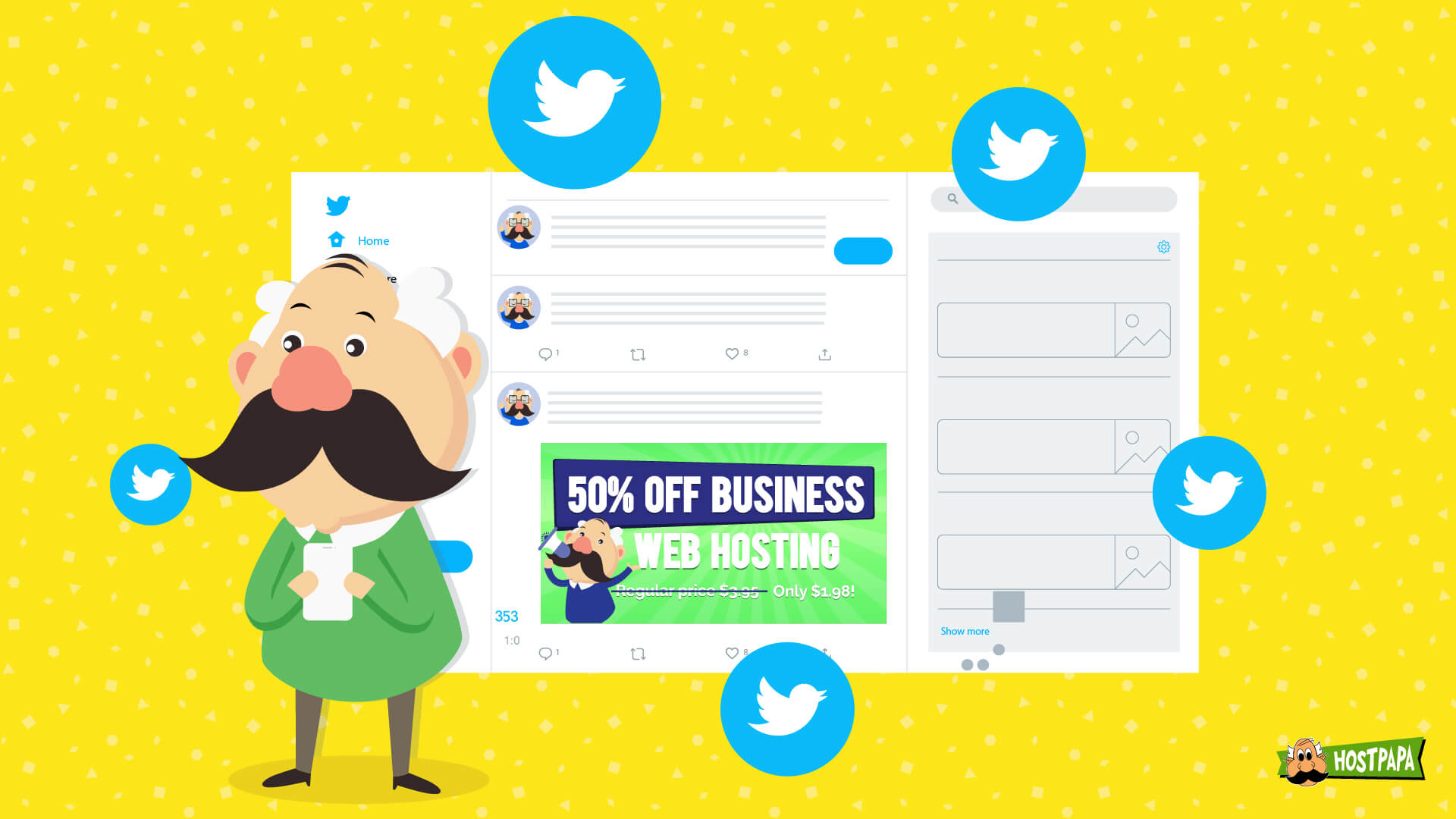Twitter is a great social media platform to share your company’s views, engage with customers and followers, and establish a brand presence. Plus, you can also use Twitter to generate leads, answer customer questions, and create a strong relationship with your followers.
Over 70% of small businesses use Twitter, so there’s a lot of competition. That’s why making headway on Twitter requires more than just setting up a profile, and adding a couple of ad-hoc tweets. You’ll need to create your small business Twitter strategy and use the platform features to reach your paying customers.
Set Smart Goals and Develop Your Twitter Small Business Strategy
Before you start tweeting, take some time to develop a Twitter marketing strategy. Begin by establishing what you hope to achieve with your Twitter account.
- Do you want to use the social media channel to expand your reach and your brand presence?
- Or do you want it to be a lead generation tool primarily?
- Do you want to establish your expertise in a particular subject with Twitter?
- Or will you use this account to answer customer service inquiries?
Prioritize what is important to you – it will help you figure out the rest of the plan.
As part of your Twitter for small business strategy, it’s essential to research your audience to see whether they are on Twitter and how they engage with others. 85% of followers feel more connected to a business when they follow them on Twitter, so it might be one of the platforms where you’ll want to be present.
Your Twitter strategy for your small business should include a competitive analysis, outlining how your competitors use the platform. Knowing this will help when you develop a content calendar to share information and track the level of engagement you receive on each post.
Be sure to analyze your results each month or quarter and tweak your strategy to gain optimal results.

One of the most important aspects of using Twitter is to set up your profile correctly.
- Select a Twitter handle that includes your company name and is easy for followers to remember, spell, and use.
- Use a branded header or background image and profile photo that incorporates your logo and brand colors.
- You have 160 characters for your Twitter bio, so use that space wisely. Tell people what you do and who you do it for.
- Also, include a link to your company’s website and the day your company was founded for your birthday.
A complete and strategic profile makes it easy for people to decide whether they want to follow you and learn more about your business.
Learn from Competitors, Audience Segments, and Influencers
When it comes to posting content on Twitter, start by scoping out your competition. Follow the Twitter accounts of the competitive businesses in your industry to see what type of content they post, which hashtags they use, and which accounts they share.
Take a look at the type of media too – do they just post text or are they sharing photos and videos as well?
Next, look at each type of post’s engagement to see if you discern any type of pattern. Does your shared audience like Twitter posts that have a visual element, or are they more engaged in industry-specific conversations?
Build your Twitter for small business content by focusing on your audience’s interests. Consider who your target market is and what kind of Twitter accounts they follow. Why are they on Twitter in the first place, and how do you think they want to interact with your business? For example, is your audience looking for answers to specific problems, or do they just want to have a few laughs? Be sure to also follow influencers in your industry. This will give you an idea of what kind of content gets traction on Twitter and help you understand what your audience pays attention to.
Post Consistently with a Content Calendar
Once you have an idea of what type of content to post, be sure to schedule it all into a content calendar. This will ensure you post consistently on Twitter. When it comes to building a social media following, you need to post useful and valuable information on a regular and frequent basis. If you’re only sharing content once a month, it’s unlikely your customers will want to follow you.
Keep in mind that there are optimal times for posting on Twitter. If you post at the right times, you increase your audience’s chances of seeing your posts and engaging with them.
If you run a B2B business, it’s best to post on weekdays during 8-10 am and 6-9 pm. This correlates to commuter times when a lot of people check Twitter on their phones. If you run a B2C company, then opt to post on the weekends. During the lunch hour is also a good time to post, because people are on a break from work.
Use your Twitter small business content calendar to organize and schedule your content, and then share the calendar with your team so they can collaborate. If you want to schedule in your tweets, go with a scheduling platform like HootSuite, Sprout Social, or HubSpot.

Use Twitter for Two-Way Conversations
Many businesses tend to use Twitter as a broadcast messaging system when they first get on the platform, merely sharing information about themselves without engaging with their audience. To get the most return from your social media accounts, you need to focus on dialogue, not monologues.
Engage your audience by tagging subject matter experts or high-profile people in your industry in relevant posts to ask for their thoughts. Reply to people who ask you questions or join in your conversations. Businesses can even build a rapport by thanking followers who share their posts – it’s a simple action that shows others you value them.
Understand How Hashtags Work
Hashtags help your posts get found by the right people and are an incredible way to increase your small business engagement level on Twitter. Don’t just hashtag any word, though; make meaningful choices. Take a look at what hashtags are most popular in your industry and with your competitors.
Also, be aware of trends and join in conversations where you have context and background. Don’t use a trending hashtag just for the sake of it. Evaluate if you have valuable insights to share on the topic. Keep in mind that it’s best not to use more than three hashtags per tweet. Having too many can make it difficult for your followers to read your post.
Curate Your Twitter Feeds with Lists
It can be difficult to go through all of the content on your Twitter feed, especially if your small business has diverse interests. Consider using a Twitter List to curate and segment your feed into different topics. There are lists for everything imaginable, so create or search for lists that are relevant to your industry. That way, when you open up a specific list, you only see the accounts listed there (and their posts). This is particularly helpful when you’re just starting up and doing research. Create a list for competitors, a list for influencers and subject-matter experts, and a list for high-profile customers.

Increase Engagement with a Twitter Poll or Chat
If you’re looking to increase engagement with your followers, try using a Twitter Poll. This is a simple way to ask a question, and it allows you to provide multiple choice answers. It’s an excellent method for getting those who are generally hesitant to engage to provide feedback, tapping into trending topics, or gaining insights on business strategy.
While many conversations on Twitter happen spontaneously, you can also schedule in a Twitter Chat on a specific topic. This is like an online event where you share content on a particular topic, and engage with followers who participate in your chat. Be sure to create a unique hashtag for your Twitter Chat and give your audience a week’s notice, so they are ready for your social event.
Increase Traffic with Paid Ads
Advertising on Twitter is an excellent choice if you’re looking to increase traffic to your profile or your business’ website. You have two main options: Promoted tweets and Twitter ads.
A promoted tweet is perfect if you’re running a campaign or want more eyes on a specific snippet of content. Twitter will run your promoted tweets in specific search results for your target market.
A Twitter ad is useful when you have specific campaign objectives like gaining more views on a video or converting more customers through a landing page. Carefully target your audience so that your ads appear in the feeds of the right people. Twitter ads help you gain more exposure for your brand in front of people who are most likely to be your customers.
Measure and Track Your Engagement
One of the best ways to improve your Twitter marketing efforts is to measure and track your posts. This way, you can see what’s working and what’s not. When you’re looking at metrics, think back to the strategic goals you set when you started your Twitter for small business strategy. Make sure you’re tracking the metrics that get you closer to your objectives.
For example, if your goal is to increase conversion to your website, then tracking retweets on a meme post isn’t going to be valuable. What you’d want to look for in that case is click-throughs and page traffic.
Similarly, if you want to increase exposure and brand awareness, you will want to focus on likes and retweets. When you’re tracking meaningful data, you will have a better idea of whether your Twitter marketing efforts are working.
A great way to up your tracking game is to use UTM parameters. This is a short text code that you add to the end of your links. They enable you to track the source, campaign name, medium, and more details about your web traffic and sales conversions. By using UTM parameters, you get a clear understanding of how people got to your website from Twitter, which tweets got the most clicks, and what the return was on each campaign.
Carefully Refine Your Twitter for Small Business Strategy
When it comes to Twitter marketing, you must start with a strategy. However, strategies aren’t set in stone. Goals change, expectations change, and plans change. Be sure to review your analytics on a regular basis to understand whether your current small business Twitter strategy is effective. If not, then it’s time to review your plan and make the needed adjustments. And if it is working, you need to make sure you replicate your efforts on the next campaign. Your Twitter strategy will guide your marketing forward at every step.




